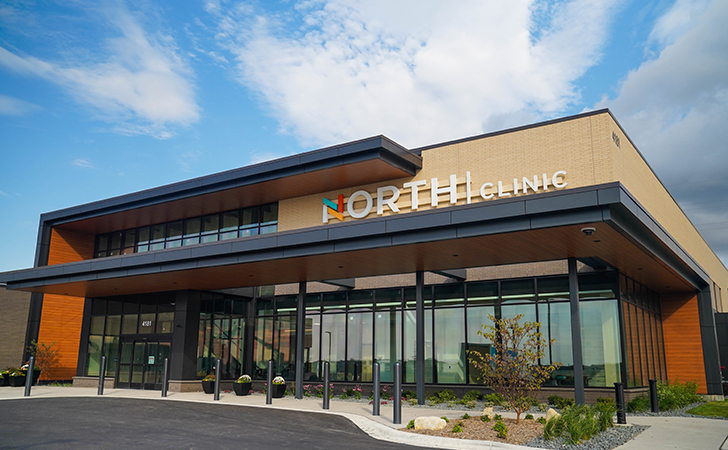The Ultimate Overview to Recognizing Urgent Care Clinics
The Ultimate Overview to Recognizing Urgent Care Clinics
Blog Article
Recognizing the Duty of Urgent Treatment in Offering Timely Treatment for Non-Life-Threatening Problems
Urgent treatment facilities have arised as an essential element of the medical care landscape, attending to the prompt demands of clients with non-life-threatening problems. Comprehending the nuances of immediate care can substantially impact individual outcomes and the general efficiency of medical care delivery.
What Is Urgent Care?
Immediate care refers to a group of medical services made to address non-life-threatening conditions that need immediate interest. These centers work as an intermediary between main treatment doctors and emergency rooms, using a hassle-free choice for patients who require punctual treatment without the comprehensive waiting times generally related to emergency situation divisions.
Immediate treatment facilities are typically staffed by doctor, including physicians, nurse professionals, and doctor aides, who are educated to identify and treat a broad variety of problems. Typical solutions given by these centers consist of treatment for small injuries, diseases, and infections, along with diagnostic tests such as X-rays and laboratory work.
The availability of immediate care is an essential element in its appeal, as several facilities operate past routine office hours, consisting of weekend breaks and nights. This prolonged availability permits individuals to receive prompt care when their health care copyright might not be available. Additionally, immediate care facilities usually approve walk-in clients, removing the requirement for consultations. In general, immediate care plays an essential function in the healthcare system, guaranteeing patients can access necessary medical services without delay and efficiently.

When to look for care at an immediate care facility instead of a key care medical professional or an emergency area,Numerous people might find themselves unclear about. Immediate treatment is created to address non-life-threatening problems that require timely focus yet are not severe enough to necessitate an emergency area see.
Generally, one must think about immediate look after problems such as small fractures, sprains, cuts calling for stitches, or infections like urinary system infections. Additionally, chilly or influenza symptoms, rashes, and allergic reactions can likewise be properly taken care of in this setting.
It is very important to keep in mind that urgent care is not ideal for deadly emergencies, such as upper body pain, difficulty breathing, or serious bleeding, which require prompt emergency clinic intervention.
People who lack access to a main treatment medical professional or can not safeguard a timely consultation might likewise profit from urgent care services. Inevitably, understanding when to use urgent care can lead to much more effective health care shipment, enabling clients to get the appropriate degree of care based on their specific health demands.
Benefits of Urgent Care Centers
Choosing urgent treatment facilities for non-life-threatening problems provides a number of benefits that improve individual experience and access. One main benefit is the decreased delay times compared to typical emergency situation spaces. Urgent care centers generally operate a first-come, first-served basis, permitting individuals to get timely clinical focus without the lengthy hold-ups often related to health center settings.
Additionally, immediate care facilities supply prolonged hours, including nights and weekends, fitting clients with differing routines. This flexibility makes certain that people can seek care when it is most practical for them, even more advertising prompt treatment.

Furthermore, these facilities frequently offer a thorough variety of services, consisting of minor treatments and diagnostic examinations, all under one roof covering. This loan consolidation of solutions not just enhances the client experience but likewise fosters a more cohesive technique to managing non-life-threatening wellness problems, inevitably benefiting total patient results.
Common Problems Treated
At urgent treatment facilities, a range of non-life-threatening problems can be efficiently dealt with, providing clients with timely and available clinical this hyperlink assistance. These facilities are specifically adept at attending to problems that need punctual attention but do not present a prompt risk to life or limb.
Common problems dealt with at immediate care centers consist of small injuries such as strains, pressures, and cracks. Immediate treatment centers are geared up to do required diagnostic tests, such as X-rays and lab tests, allowing them to give thorough treatment.
In addition, immediate care companies can administer inoculations, assisting to stop the spread of infectious conditions - Urgent Care. They likewise provide solutions for minor procedures, such as suturing injuries or draining pipes abscesses. By using these diverse solutions, urgent treatment centers play an essential duty in bridging the void between health care and emergency situation services, ensuring people get prompt treatment for a vast array of conditions without the requirement for lengthy wait times generally linked with emergency areas
How Urgent Treatment Supports Health Care System
Immediate care facilities play an essential duty in supporting the general medical care system by minimizing the concern on emergency situation departments and supplying timely access to clinical treatment for non-life-threatening conditions. By handling instances such as minor injuries, infections, and diseases, immediate treatment facilities enable emergency situation divisions to concentrate on more important patients needing instant focus.
Moreover, urgent care facilities boost medical care availability, supplying extended hours and an easier alternative to typical medical care settings. This availability is specifically beneficial for patients that may not have a regular doctor or who need instant therapy beyond common office hours. As a result, urgent care centers properly lower wait times and improve individual fulfillment.
Furthermore, immediate treatment centers add to set you back savings for both patients and the health care system by giving lower-cost solutions contrasted to emergency situation divisions. This economic performance is essential in a period of climbing health care expenses, allowing clients to get required treatment without sustaining expensive expenses.
Verdict
In verdict, urgent treatment centers play an essential duty in the health care system by delivering prompt therapy for non-life-threatening problems. By linking the gap between health care and emergency clinic, these centers make certain that patients receive prompt medical attention without the extensive wait times generally related to emergency situation departments. The ease of access and performance of immediate care facilities contribute dramatically to relieving the overall concern on medical care resources, boosting client outcomes, and advertising a much more reliable health important source care distribution system.
Urgent treatment centers have arised as an important part of the healthcare landscape, resolving the immediate demands of patients with non-life-threatening problems. Urgent treatment visits normally sustain lower out-of-pocket expenditures compared to emergency division check outs, making treatment much more budget-friendly for patients without jeopardizing top quality. Urgent care facilities are furnished to perform required diagnostic examinations, such as X-rays and lab examinations, enabling them to supply detailed care.
By offering these diverse solutions, urgent treatment centers play an essential visit this site right here role in linking the gap between main care and emergency services, making sure people receive timely treatment for a broad variety of problems without the need for long wait times normally linked with emergency situation areas.
Moreover, urgent treatment facilities enhance health care access, offering extended hours and a more practical alternative to conventional main care settings.
Report this page